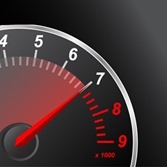Fast website loading is very important for a variety of reasons. First, the visitors are most likely to stay long and find it more enticing to browse and navigate through the pages. Second, it is good for SEO, which is beneficial for your business marketing. These significant points make website and web pages loading speed very crucial for anyone who wants to succeed in the online world, especially for business sites. A lot of sites are sluggish when it comes to loading pages and content, and the short retention time of online users put these sites at a grave disadvantage.
How do you increase your site’s load speed? Experts from Web design Perth offer these proven effective tips:
1. Reduce HTTP Request
About 80% of the loading time of a page is spent on various parts of the page like images, scripts, stylesheets, scripts, Flash, and others; and all these elements require an HTTP request. Hence, the more elements there are in your page, the more HTTP request is made that requires a longer time. Hence, if you want to reduce the loading time of your page, you need to reduce the HTTP request you make by minimizing the number of elements in your page. You can also use CSS instead of an image whenever possible.
2. Decrease Server Response Time
Various factors affect the response time of your server, including databases, traffic and hosting, resource usage and server software. To reduce server response time you need to look into these factors and find ways to improve them. Hosting, for example, has to be examined. It has to upgrade whenever the traffic your receive increases to accommodate all your website response needs.
3. Use a Content Delivery Network (CDN)
A Content Delivery Network of CDN helps in increasing your website speed by offering alternative server nodes to download the resources. Resources often refer to images and JavaScript and are cached in nodes. These geographically dispersed servers are spread globally and thus the CDN provides you nodes that are closer to your location. It provides consistent speed and performance for all your visitors.
4. Allow Compression
Compression is the process wherein large bits of files that are bulky and slow to load are zipped together to reduce the load time by reducing the bandwidth of each page, leading to a reduction in HTTP response. You can use third- party modules or built-in routines to zip files.
5. Reduce Plugins on your Website
Too many plugins in your site may slow it down significantly. As well, it causes other issues like security problems, crashes, and some other technical difficulties. Hence, bringing down the number of plugins you are using on your site will considerably increase your load time. You can start deactivating and deleting plugins that are unnecessary and gradually removing those that affect your load speed.
There are many other ways to increase your site’s load speed. You can ask the help of professional programmers and developers to help you improve your site.

